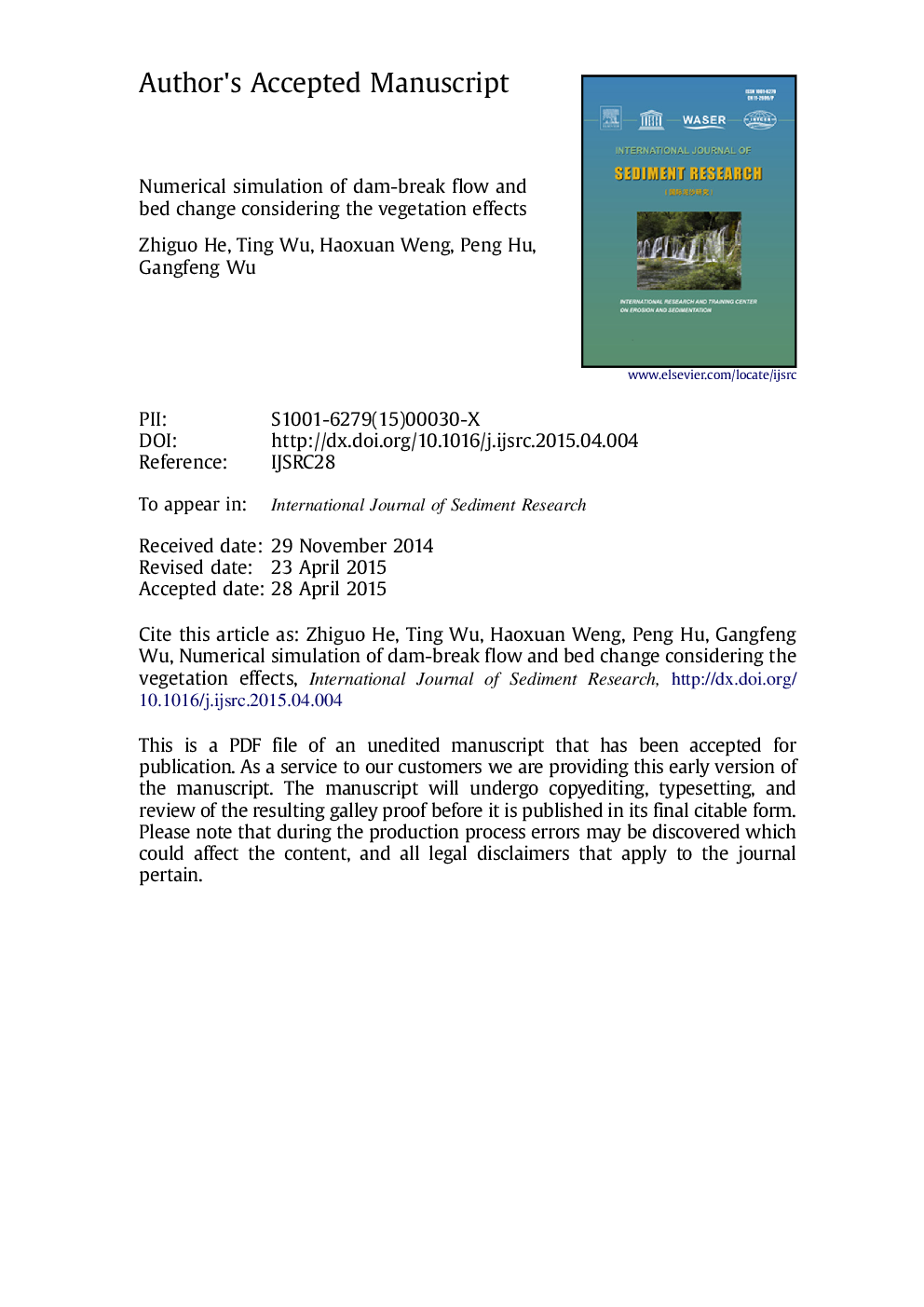| Article ID | Journal | Published Year | Pages | File Type |
|---|---|---|---|---|
| 8911208 | International Journal of Sediment Research | 2017 | 38 Pages |
Abstract
Existing numerical investigations of dam-break flows rarely consider the effects of vegetation. This paper presents a depth-averaged two-dimensional model for dam-break flows over mobile and vegetated beds. In the model, both the consequences of reducing space for storing mass and momentum by the existence of vegetation and dragging the flow are considered: the former is considered by introducing a factor (1âc) to the flow depth, where c is the vegetation density; the later is considered by including an additional sink term in the momentum equations. The new governing equations are discretized by the finite volume method; and an existing second-order central-upwind scheme embedded with the hydrostatic reconstruction method for water depth, is used to estimate the fluxes; the source terms are estimated by either explicit or semi-explicit methods fulfilling the stability requirement. Laboratory experiments of dam-break flows or quasi-steady flows with/without vegetation effects/sediment transport are simulated. The good agreements between the measurements and the numerical simulations demonstrate a satisfactory performance of the model in reproducing the flow depth, velocity and bed deformation depth. Numerical case studies of six scenarios of dam-break flows over a mobile and vegetated bed are conducted. It is shown that when the area of the vegetation zone, the vegetation density, and the pattern of the vegetation distribution are varied, the resulted bed morphological change differs greatly, suggesting a great influence of vegetation on the dam-break flow evolution. Specifically, the vegetation may divert the direction of the main flow, hindering the flow and thus result in increased deposition upstream of the vegetation.
Related Topics
Physical Sciences and Engineering
Earth and Planetary Sciences
Geochemistry and Petrology
Authors
Zhiguo He, Ting Wu, Haoxuan Weng, Peng Hu, Gangfeng Wu,
